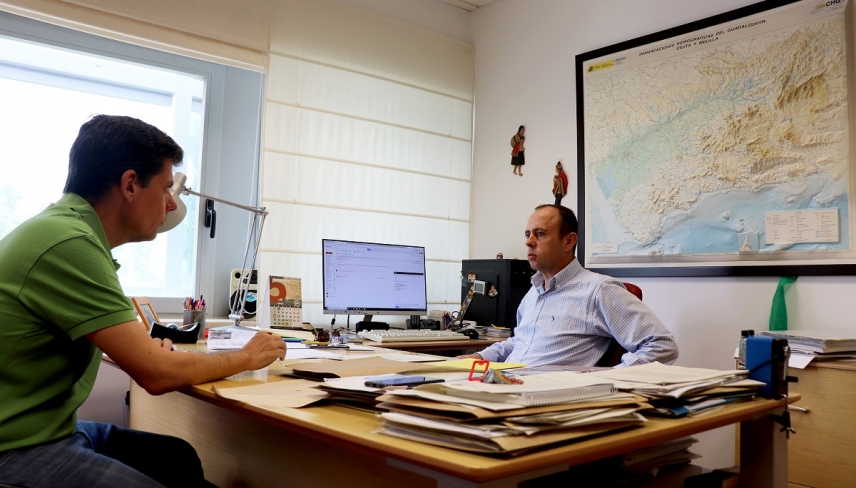 These kinds of systems are made up of a control station, usually a computer, wired to a network of nodes spread across the irrigated area. Whereas telemetry measures a series of variables like water used and flow in these nodes, a remote control allows for acting on certain parameters via a hydraulic valve.
These kinds of systems are made up of a control station, usually a computer, wired to a network of nodes spread across the irrigated area. Whereas telemetry measures a series of variables like water used and flow in these nodes, a remote control allows for acting on certain parameters via a hydraulic valve.
Fifteen years after the implementation of these two lines of thinking, a research group including University of Cordoba Agronomy Professors Emilio Camacho and Juan Antonio Rodríguez Díaz decided to assess if these kinds of systems have been successful or not. The research group was intent on finding out if the goals of these systems have been met and searching for any necessary improvements.
Having received a positive result, this kind of equipment is being used by most water users associations in their normal irrigation. Though the questionnaire of 110 questions that 84 water users associations throughout Spain (including ones in towns within the province of Cordoba like Genil, Cabra, Bembézar and Fuente Palmera) responded to showed general approval, the results also reveal issues with the use of remote control and telemetry.
15% of the surveyed associations have irrigation systems that are no longer in use and 19% of them have systems that are not able to control more than half of the hydraulic valves. Neglect and lack of maintenance stem from trouble adapting: if the farmers do not see the specific usefulness of this technology, which requires a certain amount of effort to maintain due to its short lifespan, the technology is discarded.
When technology adapts to an association, the benefits are enormous. As Camacho sees it, one of the most important factors is the efficient use of water and energy that comes with this technology. Using a remote control system regularly makes electricity bills go down, electricity being one the highest costs for water users associations. Therefore, this method not only makes life easier for farmers but also contributes to creating sustainable agriculture and greener operating systems.
Future lines
The 250 millon euro cost paid for by both governments and water users associations to implement this system is evidence of a social turn shown in this project that could serve as a tool to assess public policy, in this case endorsed by the parties involved.
What is more, thanks to this project, future lines have been established that could lead to total implementation. On one hand, the need for standardization has been established. This standardization would homogenize procedures in the equipment. Combined with establishing a long warranty period and continuing training for the remote control and telemetry users would prevent the users from giving up.
All these factors along with technological developments allowing for up-to-the-minute updates on mobile technology give forward-looking strength to this modernized irrigation.
Playán, E., Salvador, R., Bonet, L., Camacho, E., Intrigliolo, D.S., Moreno, M.A., Rodríguez-Díaz, J.A., Tarjuelo, J.M., Madurga, C., Zazo, T., Sánchez-de-Ribera, A., Cervantes, A., Zapata, N. (2018) Assessing telemetry and remote control systems for water users associations in Spain. Agricultural Water Management, 202, pp. 89-98. Doi: http://dx.doi.org/10.1016/j.agwat.2018.02.015


